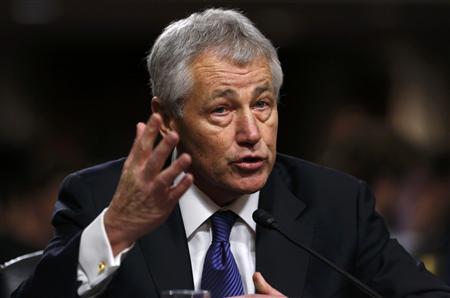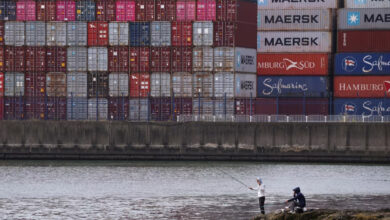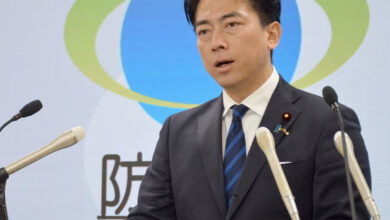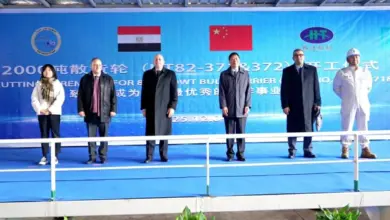
China showed off its new aircraft carrier to US Defence Secretary Chuck Hagel on Monday, allowing him a first-hand look at a symbol of its growing military prowess.
Hagel arrived in the port city of Qingdao, kicking off a three-day tour of China with a visit to the carrier at Yuchi naval base. He was the first foreigner allowed aboard the vessel by the often secretive People's Liberation Army (PLA), officials said.
His visit to China comes against the backdrop of friction between Washington and Beijing over cyber-spying, with each side trading accusations of digital espionage.
Last month the New York Times and Germany's Der Spiegel reported that the US National Security Agency (NSA) had accessed the email archive of Chinese telecommunications giant Huawei, communications between top company officials and the source code of some of its products.
The operation grew to include penetrating Huawei communications products sold to third countries, the reports said. Washington has long seen Huawei as a security threat due to perceived close links to the Chinese government, which the company denies.
Upon arrival in Qingdao from Japan, Hagel was greeted by Chinese military officers and US ambassador Max Baucus. Reporters were not allowed to accompany Hagel on to the naval base.
The carrier visit was "significant" as Washington has tried to forge a dialogue with China's top brass to ease tensions and prodded Beijing to be more open about its military, said a senior US defence official in advance of Hagel's inspection.
"We requested this and they agreed," said the official, who spoke on condition of anonymity.
The carrier, the Liaoning, "symbolises for the PLA their ambition to project naval power", the official said.
The Liaoning was a Soviet-made warship based in Ukraine that the Chinese bought and refitted, completing the work in September 2012 in a milestone for the country's expanding military.
China also has started constructing the second of four planned aircraft carriers, Chinese media reports in January quoted a Communist Party official in the province where it is being built as saying.
The official added that it is expected to take six years to construct.
Unlike American aircraft carriers, the Liaoning is not nuclear-powered and has a shorter range. It has no catapult system for launching aircraft but merely an inclined ramp.
The Liaoning nevertheless reinforces the image of China as a military power with global reach. Analysts say it could be used in confrontations with smaller countries that have territorial disputes with Beijing.
China is also making major investments in submarines, anti-ship missiles and other hardware designed to bolster its naval clout in an area once solely dominated by the American fleet.
On the Beijing leg of the trip, Hagel is scheduled to meet his counterpart General Chang Wanquan, and give a speech at the PLA National Defence University.
– 'Great responsibilities' –
Before travelling to China, Hagel warned it against unilateral action to resolve territorial disagreements with its smaller neighbours, drawing a parallel with Russia's involvement in Ukraine.
"You cannot go around and redefine boundaries, violate territorial integrity and sovereignty of nations by force, coercion and intimidation — whether it's in small islands in the Pacific, or large nations in Europe," Hagel said on Sunday in Tokyo.
"So I want to talk to our Chinese friends about this."
He said he would talk to the Chinese about "respect for their neighbours" and that as "a great power," China has "great responsibilities."
His blunt comments underscored a tougher US line in recent months on China's approach to territorial claims in the South China Sea and the East China Sea, after some Southeast Asian countries accused Beijing of intimidatory tactics.
While in Tokyo Hagel promised to send two more missile defence ships to Japan and reaffirmed Washington's military treaty commitments, seeking to reassure its longtime ally as Tokyo grapples with a tense dispute with Beijing over islands in the East China Sea.
The US ships would join five Aegis missile defence vessels already stationed in the area, and were part of an American strategic "rebalance" to the Asia-Pacific, officials said.
Hagel's announcement follows the deployment of a second early warning US radar to Japan as well as P-8 maritime surveillance aircraft, and plans to bring unmanned Global Hawk drones to the country.
Although Hagel said the US warships were being sent to help counter the threat posed by North Korea, the move also carried symbolic weight amid Japan's standoff with China over disputed islands in the East China Sea.




